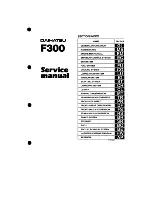
Trailer loads
!
Use a drawbar noseweight as close as pos-
sible to the maximum permissible nose-
weight. Do not use a noseweight of less than
50kg, otherwise the trailer may come loose.
Note that the payload and the rear axle load
are reduced by the actual payload.
Towing a trailer is not possible with all models.
For further information, see (
Y
page 209).
Missing values for the E 350 4MATIC model
were not available at the time of going to print.
All models
(except
E 350 4MATIC)
Permissible trailer load,
unbraked
750 kg
Permissible trailer load,
braked (at a minimum
gradient-climbing capa-
bility of 12% from a
standstill)
1800 kg
Maximum drawbar
noseweight (the draw-
bar noseweight is not
included in the trailer
load)
75 kg
The actual noseweight may not, however, be
higher than the value which is given:
R
on the type plate of the trailer tow hitch and
R
on the type plate of the trailer
The lowest weight applies.
You can attach carrier systems, e.g. bicycle
racks or load-bearing implements, to the ball
coupling. The maximum payload of 75 kg applies
when using carrier systems on the ball coupling.
Permissible rear axle load when tow-
ing a trailer
Towing a trailer is not possible with all models.
For further information, see (
Y
page 209).
Missing values for the following models were not
available at the time of going to print.
R
E 250 CDI
R
E 400 (207.465)
Manual
transmission
Automatic
transmission
E 200
1300 kg
1305 kg
E 220
BlueTEC
1340 kg
1340 kg
E 250 CDI
E 250
BlueTEC
1350 kg
1355 kg
Automatic transmis-
sion
E 250
1320 kg
E 320
1335 kg
E 400 (207.465)
E 400 (207.461)
1340 kg
E 350 BlueTEC
1320 kg
344
Trailer tow hitch
Tec
hni
ca
ldata



































